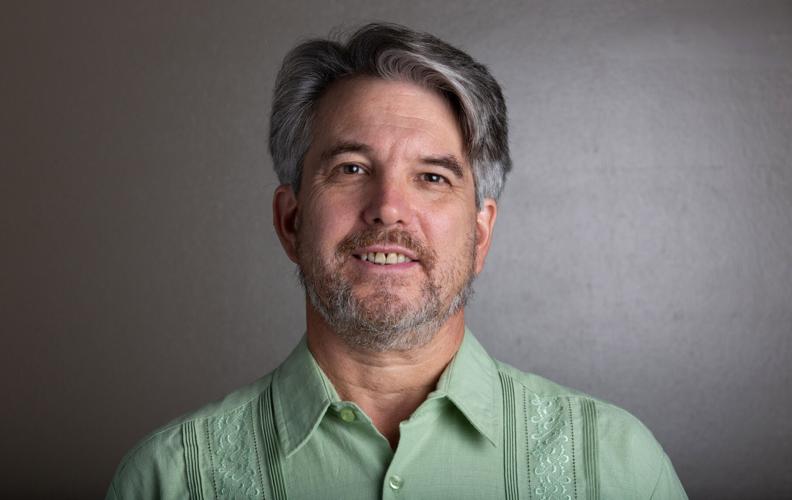An advocate for a new school-funding system for Arizona pointed to Sunnyside Unified School District Monday as an example of the inequality the new proposal aims to fix.
“A student from Sunnyside Unified in Tucson is worth approximately $5,500 less than a student from Phoenix Union,” said Matthew Simon of the advocacy group Great Leaders, Strong Schools, which helped design the proposal.
The only thing is, Sunnyside would not benefit from the proposed new funding system in the near future.
“It’s interesting they cited us,” Sunnyside superintendent Steve Holmes told me Tuesday. “My understanding is it would not be applicable for any district that has debt service past four years.”
That includes Sunnyside, which is still working on a bond issue passed in 2011.
These poorer districts may serve well as props in the argument for the half-baked new system, introduced as a strike-all amendment to an unrelated bill. But this system clearly isn’t designed with them as a top priority.
Urban districts such as Sunnyside were kept completely out of the design of this new proposal. The discussion has been going on since October, the sponsor Rep. Michelle Udall said, but Holmes didn’t know of it till earlier this month, as word leaked into Arizona superintendent circles.
It was charter-school advocates such as Simon and the group he represents, Great Leaders, Strong Schools, that designed the proposal along with Udall. Not surprisingly, charter schools are the clearest beneficiary of the new plan. Essentially all of them would receive increased funding.
There’s nothing wrong with them trying to accelerate an overdue reform of school funding in Arizona, but it should not be just them.
District schools have a much more difficult time figuring out even what the impact would be. Although the proposal would add more than $200 million to annual school spending, 121 districts would actually lose money.
This proposal is the latest example of the tail — charter schools and school-choice advocates — wagging the dog in Arizona education. About 80% of Arizona public school students go to district schools, and 20% to charters.
But the dominant political faction when it comes to education at Arizona’s Legislature is the 20%.
Both of my kids have attended charter and district schools in Tucson. I appreciate the value of both options. But this smaller faction should not be dominating such an important debate in Arizona.
Yet, that is what House Republicans ensured by rushing this proposal as a strike-all amendment during the last week possible, late in the legislative session. SB 1269 was originally introduced as a technical fix to Arizona tax law, by Sen. Vince Leach of SaddleBrooke. The main body of its text used to say:
“For the purposes of computing income tax pursuant to this title, for taxable years beginning from and after December 31, 2021, ‘Internal Revenue Code’ means the United States Internal Revenue Code of 1986,” and so on.
Leach permitted that text to be stricken and replaced last week with a 101-page amendment that fundamentally alters the way schools are funded in Arizona. Legislators got the text on Thursday.
Among its key provisions is that it would allow districts to receive increased state funding if they forego the voter-approved bond issues and budget overrides that have helped drive the inequality in the state. District voters would have to approve a property tax increase in order to “opt in” to the system.
Other key changes would be to transportation funding and to specific teacher-pay mechanisms. A “results-based” pool of about $50 million would go to high-performing schools.
On Monday, Rep. Regina Cobb, chair of the House Appropriations Committee, had the audacity to chastise committee members and a couple of the six total witnesses she permitted to speak for wanting to discuss the proposal deeply.
When Cobb felt Rep. Kelli Butler was violating her rules, she told Butler, “I’m going to censor you today if you do not stop.”
Still, Rep. Cesar Chavez was able to make a crucial point for districts like Sunnyside: “School districts that would not be able to opt into this because of bonds — those are some of the most neglected school districts in the state.”
Overall, though, this was embarrassing handling of a crucial piece of legislation.
Arizona Education Association president Joe Thomas, one of the many people with a deep interest in school funding who was excluded from the development of the proposal, made the key point in his testimony:
“If that’s good a bill,” he said, “it doesn’t need to be run through as a striker toward the end of the session.”
But people like Thomas and Chuck Essigs, of the Arizona Association of School Budget Officials, had no say. That is, of course, by design. They are viewed as dinosaurs of the old system who only want endlessly more money for schools.
What’s missing in that view is that they represent the districts that still educate the vast majority of our children. Sure, their input might make coming to a new funding formula slower and more cumbersome, but the end result would be more likely to meet the needs of the majority of students.
And they probably wouldn’t use districts like Sunnyside as props for a change that doesn’t benefit them.
This 24-hour time-lapse video captured in midtown Tucson shows scattered storms traveling east on March 29. Video courtesy of Southern Arizona Timelapses.





